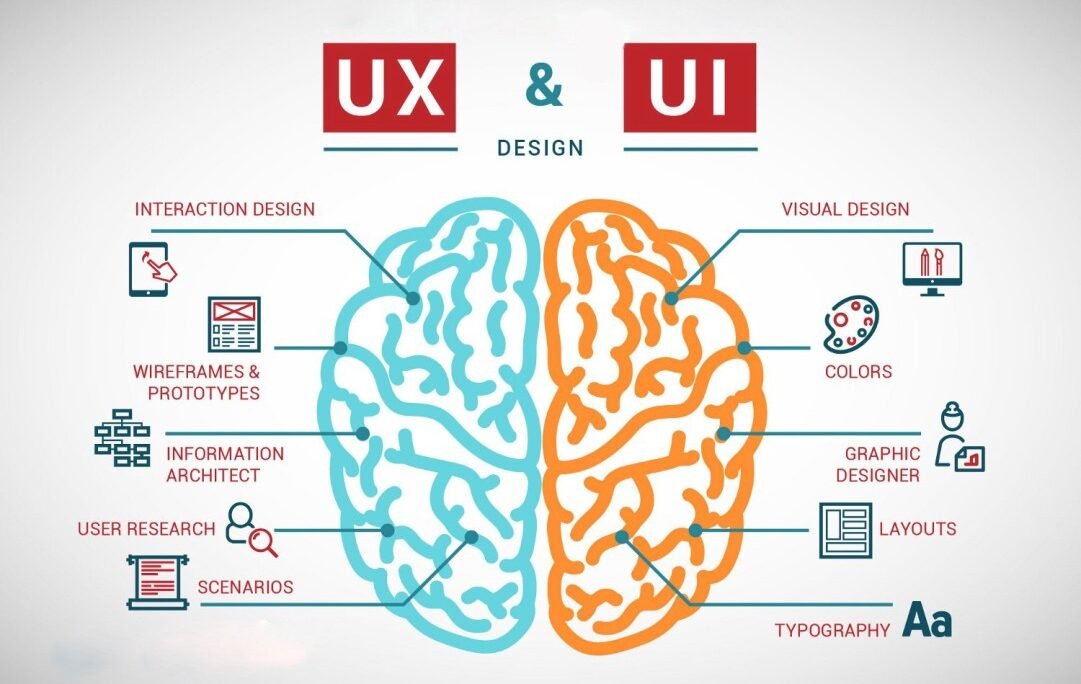Understanding the distinction between User Interface (UI) and User Experience (UX) is essential for anyone involved in the design and development of digital products. While these terms are often used interchangeably, they refer to different aspects of the design process, each playing a crucial role in creating successful products.
User Interface (UI)
UI design focuses on the visual and interactive elements of a product. It encompasses everything a user interacts with on the screen, such as buttons, icons, spacing, typography, color schemes, and responsive design. The primary goal of UI design is to create an aesthetically pleasing and intuitive interface that enhances the user’s interaction with the product.
Key Aspects of UI Design:
- Visual Design: Crafting the look and feel of the product.
- Interactive Elements: Designing buttons, sliders, and other interactive components.
- Consistency: Ensuring a uniform design across all screens and devices.
- Accessibility: Making sure the interface is usable by people with various disabilities.
User Experience (UX)
UX design, on the other hand, is about the overall experience a user has with a product. It encompasses the entire journey from the moment a user first interacts with the product to the final interaction. UX design aims to make the product functional, enjoyable, and easy to use.
Key Aspects of UX Design:
- User Research: Understanding the needs, behaviors, and pain points of users.
- Information Architecture: Organizing content and navigation in a logical way.
- Wireframing and Prototyping: Creating blueprints and models of the product.
- Usability Testing: Testing the product with real users to identify issues and improve the design.
Importance of UI and UX
Both UI and UX are critical for the success of digital products, but they serve different purposes:
- UI Importance: A well-designed UI can attract users and make their interaction with the product enjoyable. It focuses on the aesthetics and the interactive elements, ensuring that users find the product visually appealing and easy to navigate. Good UI design can significantly impact the first impression and overall satisfaction of users.
- UX Importance: UX design is crucial for ensuring that the product is usable and meets the needs of the users. It involves understanding the user’s journey and making sure that every interaction is smooth and intuitive. Good UX design can lead to higher user retention, increased satisfaction, and better overall performance of the product.
Role in the Digital World
In the digital world, UI and UX play vital roles in the success of websites, apps, and other digital products:
- UI in Digital Products: UI design is responsible for the visual appeal and interactive elements of digital products. It ensures that users can easily interact with the product, find what they need, and enjoy the experience. A well-designed UI can differentiate a product from its competitors and attract more users.
- UX in Digital Products: UX design focuses on the overall experience of using the product. It ensures that the product is easy to use, meets the needs of the users, and provides a seamless experience. Good UX design can lead to higher user satisfaction, better engagement, and increased loyalty.
Role in the Real World
While UI and UX are often associated with digital products, their principles can also be applied to real-world products and services:
- UI in the Real World: The principles of UI design can be applied to physical products, such as the layout of a control panel or the design of a physical interface. Ensuring that these interfaces are intuitive and visually appealing can enhance the user experience.
- UX in the Real World: UX design principles can be applied to any interaction between a user and a product or service. This includes everything from the layout of a store to the process of using a public transportation system. Good UX design in the real world can lead to more efficient and enjoyable experiences for users.
Conclusion
In summary, UI and UX are distinct but interconnected aspects of design. UI focuses on the visual and interactive elements, while UX focuses on the overall experience. Both are essential for creating successful products, whether digital or physical. Understanding their differences and how they complement each other can help you design better interfaces and experiences for your users.
Would you like to explore any specific aspect of UI or UX design further? Check This



